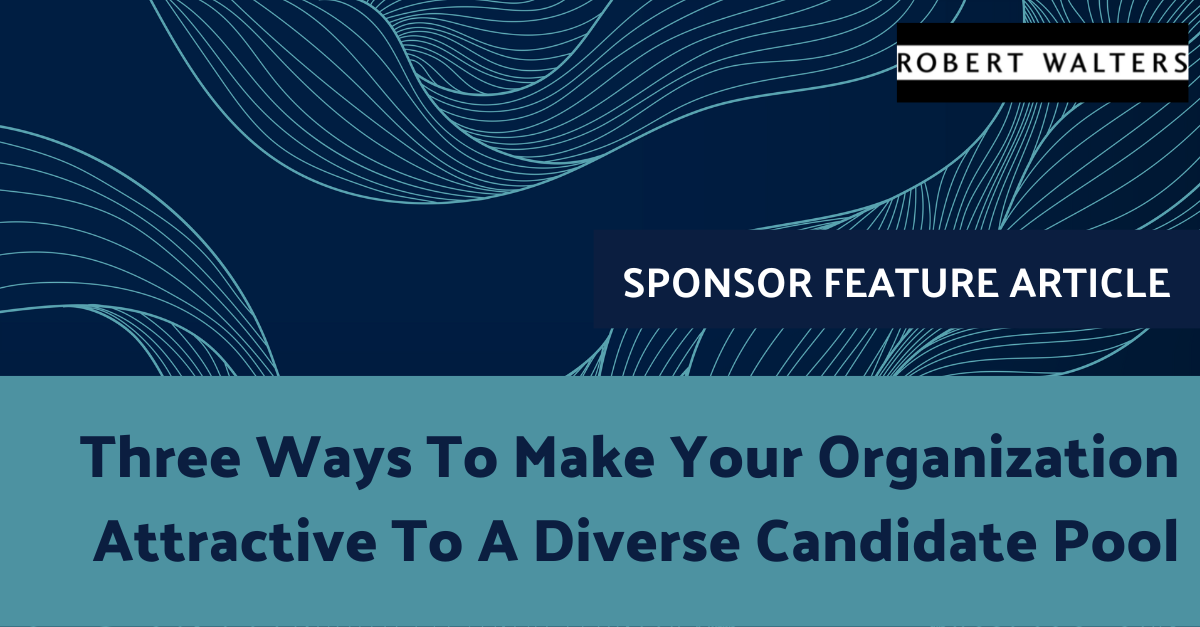Three Ways To Make Your Organization Attractive To A Diverse Candidate Pool

We know hiring practices aren’t always inclusive, and while there’s much for Californians to be happy about right now – unemployment remains low, wage growth continues, declining poverty rates – there is one HR data set that remains perpetually concerning: diverse hiring. Despite billions invested in diversity and inclusion interventions over the past decade, if you are recruiting for a senior, professional, skilled role right now, chances are you will hire a white man.
California is a diverse state- 39% of state residents are Latino, 35% are white, 15% are Asian American or Pacific Islander, 5% are Black, 4% are multiracial, and fewer than 1% are Native American or Alaska Natives. Despite our state diversity, there are some uncomfortable truths in Californian workplaces:
- Tech companies are almost entirely white and Asian. Apple reports that 8% of its U.S. tech workforce identified as Hispanic/Latinx in 2020. At Microsoft, that number is 7%.
- …and their start-ups remain almost exclusively a male domain. All-female founding teams received 2.1% of all VC investment in 2021
- mostly male too. Only 26% technical staff at Meta identify as female
- Fortune 500 Boards are 99.6% straight. Just 25 out of 5,670 board seats (0.4%) are occupied by openly LGBTQ+ people

So, what can be done to reverse this trend and ensure that organizations accurately reflect the communities we as leaders aim to represent?
1. Get obsessed with your recruitment data
Diversity data isn’t just about how many women you hired last month. Make sure you uncover hidden trends by analyzing your hiring data not only by division, location, and grade but also by source (referral hires will almost always be disproportionately white and male) and by funnel stage (there is no point investing in expensive hiring manager training if your data shows that the problem is in diverse talent attraction rather than bias in hiring decisions).
2. Audit your recruitment process for bias
Recruitment processes have often developed organically, evolving over time, and changing slightly as new HR leaders aim to improve on the status quo. This approach means that many processes, content, and tech exist because they work ‘well enough’ but many of these will introduce bias or ‘innocent ignorance’ into the process. Robert Walters began auditing clients’ end-to-end recruitment processes for bias back in 2020 and, to date, every single organization has had processes and barriers that disadvantage under-represented talent. Using the principle of auditing for bias, it strips out the ‘fluffiness’ some associate with diversity initiatives and focuses on actioning meaningful change.
3. Rip up the rule book
Einstein defined insanity as “doing the same thing over and over and expecting different results,” yet that is where we remain today. Recruitment and hiring policies have remained largely unchanged for decades with only innovations such as LinkedIn and assessment technology amending the process in any significant way. Yet things do need to change. Auditing your recruitment is step one but actioning the recommendations to minimize bias is how meaningful change happens.
In summary, we know the endless advantages to having a diverse workforce. But despite the many conversations taking place around ED&I, the status quo remains, things aren’t changing. Following the three steps are a good start and we at Robert Walters can provide you with an audit recognized as market leading globally to make your journey easier and targeted.
The Robert Walters end-to-end inclusivity audit is the most advanced diverse hiring audit available. Analyzing the impact of recruitment content and processes across eight different lenses of, Age, Disability & Neurodiversity, Ethnicity, Gender, Faith, LGBTQ+, veterans and socio economic.
For further information about our ED&I Recruitment Audit and how it can benefit your organization, please contact Senior HR/People Ops & Talent Manager, Karen Hennessy-Coles.

